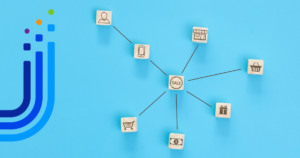Customer segmentation is the process of dividing your audience into smaller, more homogeneous groups based on shared characteristics such as demographics, purchasing behavior, preferences, and needs.
This practice is crucial for several reasons:
1. Strategy Personalization:
It allows businesses to tailor their marketing and sales strategies to the specific needs of each customer segment.
2. Marketing Efficiency:
Helps focus marketing resources more effectively by targeting customer segments with a higher likelihood of conversion.
3. Customer Retention:
Facilitates customer retention by offering personalized experiences that foster loyalty.
4. Increased Sales:
Enables the identification of cross-selling and upselling opportunities within specific segments.
5. Enhanced Customer Experience:
By better understanding customer needs, companies can offer more satisfying experiences.
Utilizing Business Intelligence
Business Intelligence (BI) is a powerful tool that collects, analyzes, and presents data effectively. Here are some ways BI can enhance customer segmentation:
1. Accurate Data Collection
The first step for effective segmentation is having precise and comprehensive data about your customers. BI can integrate with multiple data sources, including Customer Relationship Management (CRM) systems, social networks, web analytics, and more. This ensures you have a complete view of your customers.
2. Customer Behavior Analysis
BI can analyze both online and offline customer behavior to identify patterns and trends. This includes what products or services they purchase, when they buy, how frequently, and how they interact with your brand.
3. Dynamic Segmentation
BI enables the creation of customer segments based on real-time data. You can dynamically adjust segmentation as customer behaviors and preferences change.
4. Content and Offer Personalization
With BI, you can personalize communications and offers for each customer segment. For example, you can send specific product recommendations or tailored promotions based on each group’s needs.
5. Identifying Potential Customers
BI can also help identify potential customers who haven’t interacted with your brand yet. By analyzing demographic data and behaviors similar to your current customers, you can precisely target new prospects.
Improving Customer Segmentation with Examples
Let’s look at some concrete examples of how data analysis and BI can enhance customer segmentation:
Example 1
An online fashion store uses BI to analyze its customers’ purchasing patterns. It discovers that a specific customer segment prefers to buy high-end products during holiday seasons. Using this information, the store launches an exclusive marketing campaign for that group before the holidays, resulting in a significant increase in sales.
Example 2
A telecommunications company uses BI to analyze its mobile customers’ behavior. It discovers that a group of customers regularly exceeds their mobile data plan, resulting in additional costs. The company launches a personalized offer for these customers, allowing them to upgrade to a plan with unlimited data, which increases customer retention and revenue.
Example 3
A fast-food restaurant uses BI to analyze social media data and online reviews. It identifies that a group of customers is particularly interested in vegetarian and vegan menu options. The restaurant introduces new products and specific promotions to meet the needs of this segment, resulting in an increase in visits and sales.
Conclusion
Customer segmentation is essential for an effective sales and marketing strategy. Data analysis and Business Intelligence are powerful tools that can help you better understand your customers, identify opportunities, and customize your strategies to maximize sales and customer satisfaction.
By adopting a data-driven approach to customer segmentation, businesses can build stronger relationships with their customers and stay competitive in an ever-evolving market.







